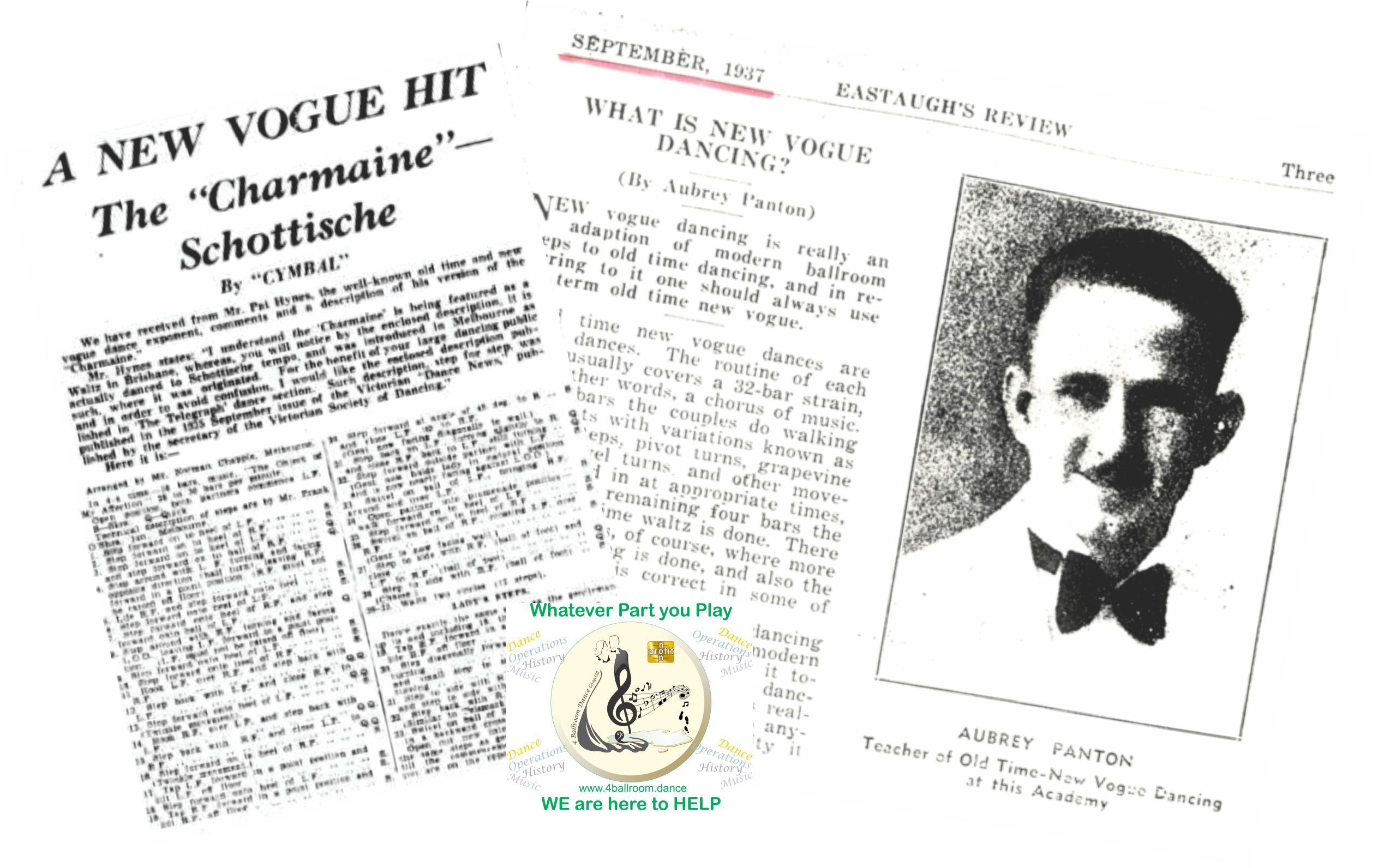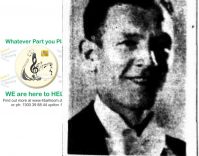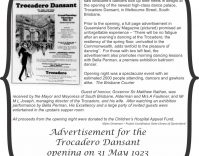What is New Vogue Dancing?

New Vogue dance is an adaption of old time dance that is uniquely Australian. In the early 1930s the Australian culture was seeking new ways to find joy, some very dedicated people developed a unique flavour of dance that is still enjoyed today.
Gentlemen like Pat Hynes who through sheer tenacity kept presenting his new dance choreographs throughout Australia, traveling from State to State. At the time, it was no minor task to present your works to different States.
It was not too long before these new adaptations to the dances took hold as being popular, forming a life and following of their own.
It was 1933 when Mr Hynes performed the Venetian Schottische at various clubs (initially noting copyright and requiring permission to perform which had been a tradition held in the UK – this ownership right waned as time went on, to also become uniquely Australian allowing the community to enjoy without fear of infringement )
In 1936 Mr Hynes performed the Charmaine Schottische in Melbourne and this dance was also picked up in other states, interestingly in Qld it was mistakenly danced as a “waltz” Until Mr Hynes corrected the misconception, (by way of news paper update to the dance editor in Nov 1936) providing steps and timing. Of note at the time, there were a number of schotissche dances were taken up as waltz timing initially until the correct steps and timing filtered through.
The Charmaine Schottische remains current in 2019 as one of the 15 New Vogue competition standard dances.
An interesting excerpt from Aub Pantons column in 1937
a time when the concept was fresh
New Vogue Dancing, is really an adaption of modern ballroom steps to old time dancing. In referring to it, one should always use the term “old time new vogue”.
Old Time New Vogue dances are figure dances (sequenced). The routine of each dance usually covers a 32 bar strain (16 bars is the more common now) or chorus of music.
For 28 bars the couples do walking movements with variations known as twinkle steps, pivot turns, grapevine steps, swivel turns and so on fitted in at the appropriate times, for the remaining 4 bars, the reverse old time waltz is done.
There are exceptions of course where more or less waltzing is done, or natural waltz is correct in some of the dances.
(noting at this time in 1937, New Vogue was in its infancy with not alot of dances – in 2019 there have been aprox 2960 new vogue dances listed that have been done regularly with an average of 400 still commonly danced around Australia in 2019)
With the modernisation of dancing and the introduction of modern ballroom dancing as we know it today (this was 1937) the popularity of old time dancing began to wane, until it was realised to restore old time to anything like its original popularity, it would have to be modernised.
Several attempts to do this were made by various teachers at different times, but it was not until Mr Pat Hynes published a book on the subject and started to demonstrate at the Palladium Sydney – also Mr Arthur Lewis of the Club Studio Sydney commenced teaching this form of dancing that it really caught on in a big way.
Old time dances almost invariably had music especially written for the various dances, even the sets had to have their own particular music, but with old time new vogue, we find that alot of the dances are designed for slow fox trot music while the ever lively 6/8 tempo is not forgotten and is used alot even for schottische dances.
Chiefly though, the old time waltz tempo is the basic for old time new vogue dances.
From a slow beginning, it spread with amazing rapidity, once the old time dancer realised what novelty and pleasure could be obtained in going through some of the intricate and fascinating figures of the different dances.
To appreciate old time new vogue dancing for what it is, one must participate in the dance and not be a spectator.
End of Column Quote.
Until today (1937 and 2019) old time new vogue is known and accepted wherever modern dancing is done.
With the emergence of the dance fraternity, suitable venues were well patronised:
Popular Queensland Dance Venues
Like so many treasures, as time goes by, photos fade as do memories, so whatever treasures you have, from whatever era, in whatever condition, please don’t let them be lost. You are the story of Australian Dance History.



